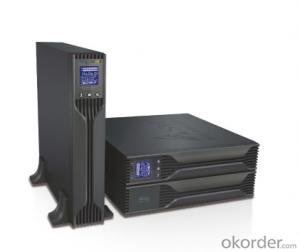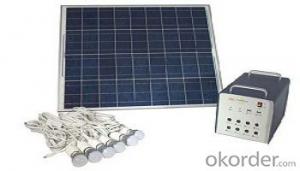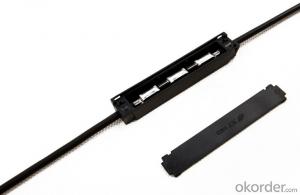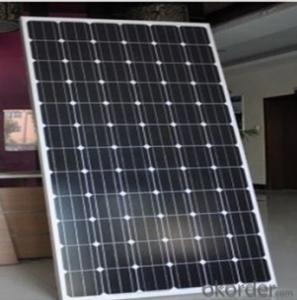double-conversion Low price of true double-conversion online ups 2kva
- Loading Port:
- China main port
- Payment Terms:
- TT OR LC
- Min Order Qty:
- 20 carton
- Supply Capability:
- 10000 carton/month
OKorder Service Pledge
Quality Product, Order Online Tracking, Timely Delivery
OKorder Financial Service
Credit Rating, Credit Services, Credit Purchasing
You Might Also Like
Low price of true double-conversion online ups 2kva

| Model | RT-1KS | RT-1KL | RT-2KS | RT-2KL | RT-3KS | RT-3KL |
| Rated power | 1KVA | 2KVA | 3KVA | |||
| Display | LED or LCD, depends on user's choice | |||||
| INPUT | ||||||
| Voltage | 110V:80~138VAC/220V:115~300VAC | |||||
| Frequency | 110V:46~54Hz or 56~64Hz/220V:40~60Hz/Adjustable by software | |||||
| OUTPUT | ||||||
| Voltage | 110V:110±2%VAC/220V:220±2%VAC | |||||
| Frequency | 110V:46~64Hz/220V:46~54Hz/Same as AC(AC mode) | |||||
| 110V: 50 or 60±0.2Hz/220V:50±0.2Hz(Batt. mode) | ||||||
| Wave form | Sine wave | |||||
| BATTERY | ||||||
| QTY. & capacity of battery | 12V/7.5AH*3pcs | ————— | 2V/7.5AH*8pcs | ————— | 12V/7.5AH*8pcs | ————— |
| Nominal DC input voltage | ————— | 36VDC | ————— | 96VDC | ————— | 96VDC |
| Transfer time | 0 ms | |||||
| Overload capability | 110%~150% for 30% seconds then transfer to bypass output, 150% above for 300 milliseconds. | |||||
| ENVIRONMENT | ||||||
| Environment of performance | Temperature 0℃~40℃, Humidity 20%~90% | |||||
| PHYSITAL | ||||||
| (kg) / Net weight (kg) | 110V:19 220V:16.3 | 110V:11.8 220V:9.1 | 38.1kg(10.3kg for US+27.8kg for battery pack) | 110V:14.2 220V:11.5 | 39kg(11.2kg for US+27.8kg for battery pack) | 110V:15 220V:12.3 |
| (mm) / Unit dimention (mm) | 441*445*88 | 441*445*88(*2 sets, there into 1 set for battery pack) | 441*445*88 | 441*445*88(*2 sets, there into 1 set for battery pack) | 441*445*88 | |
| MANAGEMENT | ||||||
| Interface | 110V:USB+RS232 220V:RJ45/11+RS232, Intelling slot selectable. | |||||

Features
1. Pure sine wave output
2. MCU dual-core controlled
3. G-sensor autorotation LCD display
4. Extensible battery pack
5. Powerful charging function(Self settable)
Field of application
Applicable to household PC, office equipment in enterprise and institution, small communication switchboard and server, LAN device, commercial POS machine, small workstation and its peripheral equipment,banking terminal, ATM system and so on.
- Q:How much space is required for installing a solar energy system?
- Several factors can influence the amount of space needed to install a solar energy system. These factors include the size of the system, the energy requirements of the property, and the available space. For residential installations, the space needed for solar panels typically ranges from 100 to 400 square feet per kilowatt (kW) of capacity. This estimate includes both the actual area occupied by the panels and the necessary spacing between them for optimal sunlight exposure. In larger-scale or commercial installations, the space required can be much larger. These installations often involve multiple arrays of panels and can require several acres or more. It's important to note that solar energy systems can be installed on various surfaces, such as rooftops, ground-mounted systems, or even integrated into building materials. Rooftop installations are common in residential settings, as they make use of available roof space to maximize energy generation. Ground-mounted systems are often used in commercial or rural areas where there is ample land. To accurately assess the space requirements for your installation, it is essential to consult with a professional solar installer. They can evaluate your specific energy needs, available space, and other site-specific factors. Local regulations and shading from nearby structures or trees can also impact the space needed for a solar energy system.
- Q:How do solar energy systems contribute to reducing the risk of power outages during extreme weather events?
- Solar energy systems contribute to reducing the risk of power outages during extreme weather events by providing a decentralized and reliable source of power. Unlike traditional power grids that rely on centralized power plants, solar energy systems generate electricity locally and are less susceptible to damage caused by severe weather. By diversifying the energy mix and incorporating solar power into the grid, communities can maintain a steady power supply even in the face of power disruptions caused by extreme weather events.
- Q:Can solar energy systems be used in powering veterinary clinics or animal shelters?
- Yes, solar energy systems can definitely be used to power veterinary clinics or animal shelters. Solar panels can be installed on the roofs or in open areas surrounding these facilities to harness sunlight and convert it into electricity. This renewable energy source can be utilized to power various electrical equipment, lighting, heating, cooling, and other necessary systems, reducing reliance on traditional energy sources and lowering carbon emissions. Additionally, solar energy systems can provide a reliable and sustainable power supply, especially in remote or off-grid locations.
- Q:Can solar energy systems be used in powering scientific research vessels or marine laboratories?
- Indeed, it is possible to utilize solar energy systems for the purpose of powering scientific research vessels or marine laboratories. Solar energy, being a renewable and sustainable power source, can be harnessed through the utilization of photovoltaic panels or solar thermal collectors. The energy requirements of research vessels and marine laboratories are substantial, given the nature of their operations which involve scientific experiments, data collection, and analysis. These activities usually involve the use of equipment like computers, sensors, and laboratory instruments, which necessitate a continuous and dependable power supply. To address this need, solar energy systems can be installed on said vessels or laboratories, providing a clean and efficient source of electricity. Through the conversion of sunlight into electricity via photovoltaic panels, the various equipment and systems on board can be powered. Moreover, any excess energy produced by the solar panels can be stored in batteries to be utilized during periods of decreased sunlight or at night. The utilization of solar energy in these marine environments presents numerous advantages. Firstly, it diminishes reliance on fossil fuels and diminishes the carbon footprint associated with conventional methods of power generation. This is particularly vital in the context of scientific research as it aligns with the principles of environmental sustainability and conservation. Secondly, solar energy systems offer a reliable and autonomous power source. Research vessels and marine laboratories often operate in remote or secluded locations where access to traditional power grids may be limited or non-existent. By harnessing solar energy, these vessels and facilities can generate their own electricity, enabling them to continue their research activities without depending on external power sources. Lastly, solar energy systems necessitate minimal maintenance and have a lengthy lifespan. Once installed, they require minimal upkeep and are capable of withstanding the harsh marine environment. This makes them highly suitable for use in research vessels or marine laboratories, where downtime and maintenance issues can be disruptive to ongoing scientific projects. In conclusion, there is no doubt that solar energy systems can be effectively employed to power scientific research vessels or marine laboratories. They offer a sustainable, reliable, and autonomous source of electricity, thereby reducing the carbon footprint and ensuring uninterrupted research activities, even in remote locations.
- Q:Can a solar energy system be installed in a remote location?
- Yes, a solar energy system can definitely be installed in a remote location. In fact, solar power is particularly beneficial for remote areas that lack access to a reliable electricity grid. The main advantage of solar energy is its ability to generate electricity from sunlight, which is available everywhere. Whether it's a remote village, a mountain hut, or a research station in the middle of nowhere, solar panels can be installed and used to generate power. Additionally, advancements in solar technology have made it possible to store excess energy in batteries, allowing for continuous power supply even during periods of low sunlight or at night. This means that remote locations can now have access to clean, renewable, and sustainable energy sources, reducing their dependence on fossil fuels and contributing to the preservation of the environment.
- Q:What is the role of voltage regulators in a solar energy system?
- The function of voltage regulators within a solar energy system is to guarantee that the voltage output of the solar panels remains regulated and maintained within a specific range. Solar panels produce direct current (DC) electricity, which must be converted to alternating current (AC) in order to be utilized in homes and businesses. Nevertheless, the voltage output of solar panels can fluctuate due to varying factors such as sunlight intensity, temperature, and system load. Voltage regulators, also referred to as charge controllers, are responsible for stabilizing the voltage output of the solar panels. They constantly monitor the voltage level and make necessary adjustments to prevent overcharging or undercharging of the batteries or electrical loads connected to the system. By maintaining a consistent voltage, voltage regulators safeguard the batteries from potential damage caused by overcharging, which can reduce their lifespan. They also prevent undercharging, ensuring that the batteries are charged to their optimal capacity, thereby maximizing their efficiency and performance. Furthermore, voltage regulators play a critical role in safeguarding electrical devices connected to the solar energy system. They avert voltage spikes or surges that could potentially harm sensitive equipment like inverters or appliances. To summarize, voltage regulators are indispensable components in a solar energy system as they regulate and stabilize the voltage output of the solar panels, providing protection for batteries and electrical devices against potential damage.
- Q:How do solar energy systems impact job training and skill development?
- Solar energy systems have a positive impact on job training and skill development. As the demand for renewable energy continues to rise, the installation, maintenance, and operation of solar panels require specialized skills. This creates opportunities for job training programs and vocational schools to offer courses and certifications specifically tailored to the solar energy industry. Consequently, individuals can acquire valuable skills, such as solar panel installation, electrical engineering, and project management, which not only enhance their employability but also contribute to the growth of the clean energy sector. Overall, solar energy systems play a crucial role in expanding job training initiatives and skill development in the renewable energy field.
- Q:What is the impact of shade from nearby buildings or trees on the performance of solar panels?
- The impact of shade from nearby buildings or trees on the performance of solar panels is significant. When solar panels are shaded, even partially, their ability to generate electricity is greatly reduced. Shade causes a decrease in the amount of sunlight that reaches the panels, thereby reducing their efficiency. Shade on solar panels can result in a phenomenon known as "panel mismatch." This occurs when some parts of the panel receive sunlight while others are in shade. As a result, the shaded cells produce less electricity than the unshaded cells, leading to a drop in overall panel performance. The shaded cells can also become a source of resistance, causing the other cells to work harder to compensate and potentially leading to hotspots or damage. Furthermore, shade can cause a disruption in the electrical flow within the panels, which can negatively impact the entire solar power system. In the case of series-connected panels, if even one cell is shaded, it can significantly reduce the output of the entire array. This can result in a substantial loss of power generation and significantly affect the return on investment and payback period of the solar panel system. It is crucial to consider the shading factor when designing and installing solar panels. Shading analysis should be conducted to determine the potential areas of shade throughout the day and year. By avoiding or mitigating shading, the performance and efficiency of the solar panels can be optimized. Various measures can be taken to address shading issues. These include adjusting the tilt and orientation of the panels, trimming or removing nearby trees, or using technologies like micro-inverters or power optimizers that minimize the impact of shade on the overall system. In conclusion, the impact of shade from nearby buildings or trees on the performance of solar panels is significant and can greatly reduce their efficiency and power generation. It is crucial to consider shading factors during the design and installation process to optimize the performance and maximize the benefits of solar energy.
- Q:Can solar energy systems be installed in any location?
- Solar energy systems can be installed in most locations, but certain factors need to be considered. The amount of sunlight, available space, and structural integrity of the site are important considerations for successful installation. Additionally, local regulations and permits may also influence the feasibility of installing solar energy systems in specific locations.
- Q:What is the role of solar energy systems in reducing dependence on fossil fuels?
- Solar energy systems play a crucial role in reducing dependence on fossil fuels by providing a clean and renewable source of energy. Fossil fuels, such as coal, oil, and natural gas, have been the primary sources of energy for centuries. However, their extraction, transportation, and combustion have significant environmental impacts, including air pollution, greenhouse gas emissions, and climate change. Solar energy systems, on the other hand, utilize the power of the sun to generate electricity. Solar panels, made up of photovoltaic cells, convert sunlight into usable energy without emitting any harmful pollutants. This clean energy source not only helps to mitigate climate change but also improves air quality and reduces health risks associated with fossil fuel combustion. By embracing solar energy systems, we can reduce our dependence on fossil fuels for electricity generation, heating, and cooling. Solar power is abundant, widely distributed, and available throughout the year, making it a reliable and sustainable energy option. Moreover, solar energy systems can be installed on various scales, from residential rooftops to large-scale solar farms, allowing individuals, communities, and businesses to contribute to the transition away from fossil fuels. Not only does solar energy reduce our carbon footprint, but it also provides economic benefits. As the technology advances and becomes more widespread, the cost of solar panels and installation continues to decline. This makes solar energy more affordable and accessible for both individuals and businesses, leading to job creation and economic growth in the renewable energy sector. Furthermore, solar energy systems offer energy independence and resilience. Unlike fossil fuels, which are finite resources and subject to price volatility, sunlight is abundant and freely available. By harnessing solar power, we can reduce our reliance on imported fossil fuels, enhance energy security, and create a more stable and sustainable energy supply. In conclusion, solar energy systems play a crucial role in reducing dependence on fossil fuels. By harnessing the power of the sun, we can transition to a cleaner, more sustainable, and resilient energy future. Solar energy helps mitigate climate change, improve air quality, create jobs, and provide energy independence. It is a viable solution that enables us to reduce our environmental footprint while meeting our energy needs.
1. Manufacturer Overview |
|
|---|---|
| Location | |
| Year Established | |
| Annual Output Value | |
| Main Markets | |
| Company Certifications | |
2. Manufacturer Certificates |
|
|---|---|
| a) Certification Name | |
| Range | |
| Reference | |
| Validity Period | |
3. Manufacturer Capability |
|
|---|---|
| a)Trade Capacity | |
| Nearest Port | |
| Export Percentage | |
| No.of Employees in Trade Department | |
| Language Spoken: | |
| b)Factory Information | |
| Factory Size: | |
| No. of Production Lines | |
| Contract Manufacturing | |
| Product Price Range | |
Send your message to us
double-conversion Low price of true double-conversion online ups 2kva
- Loading Port:
- China main port
- Payment Terms:
- TT OR LC
- Min Order Qty:
- 20 carton
- Supply Capability:
- 10000 carton/month
OKorder Service Pledge
Quality Product, Order Online Tracking, Timely Delivery
OKorder Financial Service
Credit Rating, Credit Services, Credit Purchasing
Similar products
New products
Hot products
Hot Searches
Related keywords
































